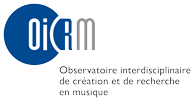The Development of Music Audiences in Quebec (DMAQ) project is an original initiative that combines academic research and practical expertise through partnership with music organizations. The Orchestre symphonique de Montréal (OSM), the Société de musique contemporaine du Québec (SMCQ), the théâtre Hector-Charland, the Arab World Festival of Montreal (FMA), the Festival de Lanaudière, the Violons du Roy and the maison de la culture Ahuntsic-Cartierville are all associated with this project to understand the relationship between music and the public, in order to create new methods of audience development. The Conseil québécois de la musique (CQM) is also one of the partners.
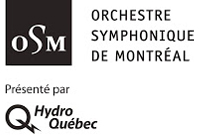 L’Orchestre Symphonique de Montréal: Founded in 1934, the Orchestre symphonique de Montréal is a major cultural organization in Québec. After having been led by music directors including Franz-Paul Decker, Rafael Frühbeck de Burgos, and Charles Dutoit from 1977 to 2002, the OSM has been under the direction of Kent Nagano since September 2006. The excellence of the OSM has been brilliantly demonstrated through its performances in more than forty national and international tours. The Orchestra has toured in Asia nine times, including eight visits to Japan, and has toured Europe on ten occasions and South America twice. The OSM has also given many performances in the United States and in certain Canadian cities. The OSM performed at the Paris Théâtre du Châtelet in 2006, its first international concert with Kent Nagano. In April 2007, the Orchestra embarked on its first cross-Canada tour, also under the direction of Nagano. In September 2008, Maestro Nagano and seven OSM musicians visited several villages in Nunavik in Northern Québec, performing Stravinsky’s L’Histoire du soldat narrated in a local dialect. On April 2, 2009, the Orchestra presented an exceptional concert at Montréal’s Bell Centre to an audience of 15,000 people, thereby launching the OSM Foundation. The Conseil des arts de Montréal awarded the Orchestra its Grand Prize (2008) for the performance of Olivier Messiaen’s opera Saint François d’Assise during the 2008-2009 season, which marked the 75th anniversary of the OSM. The OSM has produced nearly 100 recordings with Decca, EMI, Philips, CBC Records, Analekta, ECM, and Sony as well as on the OSM label, earning forty-eight national and international awards. The OSM notably won its 13th Juno award for the album Beethoven: Ideals of the French Revolution released in 2008. Director of field research: Florence Leyssieux
L’Orchestre Symphonique de Montréal: Founded in 1934, the Orchestre symphonique de Montréal is a major cultural organization in Québec. After having been led by music directors including Franz-Paul Decker, Rafael Frühbeck de Burgos, and Charles Dutoit from 1977 to 2002, the OSM has been under the direction of Kent Nagano since September 2006. The excellence of the OSM has been brilliantly demonstrated through its performances in more than forty national and international tours. The Orchestra has toured in Asia nine times, including eight visits to Japan, and has toured Europe on ten occasions and South America twice. The OSM has also given many performances in the United States and in certain Canadian cities. The OSM performed at the Paris Théâtre du Châtelet in 2006, its first international concert with Kent Nagano. In April 2007, the Orchestra embarked on its first cross-Canada tour, also under the direction of Nagano. In September 2008, Maestro Nagano and seven OSM musicians visited several villages in Nunavik in Northern Québec, performing Stravinsky’s L’Histoire du soldat narrated in a local dialect. On April 2, 2009, the Orchestra presented an exceptional concert at Montréal’s Bell Centre to an audience of 15,000 people, thereby launching the OSM Foundation. The Conseil des arts de Montréal awarded the Orchestra its Grand Prize (2008) for the performance of Olivier Messiaen’s opera Saint François d’Assise during the 2008-2009 season, which marked the 75th anniversary of the OSM. The OSM has produced nearly 100 recordings with Decca, EMI, Philips, CBC Records, Analekta, ECM, and Sony as well as on the OSM label, earning forty-eight national and international awards. The OSM notably won its 13th Juno award for the album Beethoven: Ideals of the French Revolution released in 2008. Director of field research: Florence Leyssieux
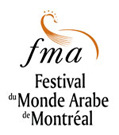 Le Festival du monde arabe: Created and produced by Alchimies, Créations et Cultures, the Arab World Festival of Montréal (Festival du monde arabe de Montréal or FMA) is a thematic event dedicated to the meeting of and dialogue between Arab and Western cultures. Through its various components, Performing Arts, Culture Forum, and Cinema, the FMA presents contemporary works that evoke heritage as much as lived experience, in addition to original productions in dance, music, theatre, and multidisciplinary, visual and media arts. Through the years, the Arab World Festival of Montréal has gained extraordinary exposure on the national and international arts scene, and has made an important contribution to Montréal culture through its commitment and its audacity, supported by a public of more than 150,000 locals and visitors of many different cultural backgrounds. In each and every edition, the festival challenges an increasingly polarized social reality. The festival’s innovative and audacious character is revealed through its thematic choices, the originality of the productions, and the diversity of its artists. The FMA has welcomed artists, groups, and intellectuals including: Les Jajouka, Wajdi Mouawad, Caracalla, le Ballet contemporain du Québec, Majida El Roumi, Nass El Ghiwane, Marcel Khalifé, Nassir Shamma, Zad Moultaka, Simon Shaheen, Omar Bashir, Lotfi Bouchnak, Les Derviches tourneurs d’Alep, Mohamed Arkoun, Robert Solé, Carlos Pinana, Ashraf Sahrif Khan, Nassima Chabane, Amazigh Kateb, Mercan Dede, Cheikh Sidi Bémol, Charbel Rouhana, etc. Director of field research: Caroline Marcoux-Gendron
Le Festival du monde arabe: Created and produced by Alchimies, Créations et Cultures, the Arab World Festival of Montréal (Festival du monde arabe de Montréal or FMA) is a thematic event dedicated to the meeting of and dialogue between Arab and Western cultures. Through its various components, Performing Arts, Culture Forum, and Cinema, the FMA presents contemporary works that evoke heritage as much as lived experience, in addition to original productions in dance, music, theatre, and multidisciplinary, visual and media arts. Through the years, the Arab World Festival of Montréal has gained extraordinary exposure on the national and international arts scene, and has made an important contribution to Montréal culture through its commitment and its audacity, supported by a public of more than 150,000 locals and visitors of many different cultural backgrounds. In each and every edition, the festival challenges an increasingly polarized social reality. The festival’s innovative and audacious character is revealed through its thematic choices, the originality of the productions, and the diversity of its artists. The FMA has welcomed artists, groups, and intellectuals including: Les Jajouka, Wajdi Mouawad, Caracalla, le Ballet contemporain du Québec, Majida El Roumi, Nass El Ghiwane, Marcel Khalifé, Nassir Shamma, Zad Moultaka, Simon Shaheen, Omar Bashir, Lotfi Bouchnak, Les Derviches tourneurs d’Alep, Mohamed Arkoun, Robert Solé, Carlos Pinana, Ashraf Sahrif Khan, Nassima Chabane, Amazigh Kateb, Mercan Dede, Cheikh Sidi Bémol, Charbel Rouhana, etc. Director of field research: Caroline Marcoux-Gendron
 La Société de musique contemporaine du Québec: The SMCQ was founded in 1966 through the initiative of prominent composers and musicians in Québec’s artistic circles. Through the performances of its Ensemble, the SMCQ has continually presented a wide gamut of contemporary music to its public. Currently directed by Walter Boudreau, this ensemble – in various formations – comprises the core of most of the season’s concerts. During its annual concert series, the Ensemble presents the masterworks of the contemporary repertoire as well as many new compositions. In 1997, the SMCQ founded a youth programme and created six musical children’s tales that were immensely successful with the young public. The SMCQ initiated an international biennial event in 2003, in partnership with Radio-Canada and Montréal universities: the Montréal / New Music Festival (Festival Montréal / Nouvelles Musiques or MNM) brings together the new music milieu and provides a privileged platform for new music composition. Between solo and orchestral works, the event draws the most passionate music theorists and musicians of our time. The SMCQ presents a homage series alternately with the MNM Festival, highlighting the work of a Québec composer through several musical events with the goal of promoting the music of the greatest contemporary composers and reaching a larger public. Directors of field research: Margalida Amengual Garí
La Société de musique contemporaine du Québec: The SMCQ was founded in 1966 through the initiative of prominent composers and musicians in Québec’s artistic circles. Through the performances of its Ensemble, the SMCQ has continually presented a wide gamut of contemporary music to its public. Currently directed by Walter Boudreau, this ensemble – in various formations – comprises the core of most of the season’s concerts. During its annual concert series, the Ensemble presents the masterworks of the contemporary repertoire as well as many new compositions. In 1997, the SMCQ founded a youth programme and created six musical children’s tales that were immensely successful with the young public. The SMCQ initiated an international biennial event in 2003, in partnership with Radio-Canada and Montréal universities: the Montréal / New Music Festival (Festival Montréal / Nouvelles Musiques or MNM) brings together the new music milieu and provides a privileged platform for new music composition. Between solo and orchestral works, the event draws the most passionate music theorists and musicians of our time. The SMCQ presents a homage series alternately with the MNM Festival, highlighting the work of a Québec composer through several musical events with the goal of promoting the music of the greatest contemporary composers and reaching a larger public. Directors of field research: Margalida Amengual Garí
 Le Théâtre Hector-Charland: Located in the Lanaudière’s southern reaches, the Théâtre Hector-Charland brings an important dynamic to cultural life at the MRC in the Assomption. The theatre stages a whole range of performing arts: spoken theatre, song, classical music, dance, jazz, world music, comedy, arthouse film, and pop music. Each year, the Hector-Charland Corporation presents more than three hundred performances at various venues including the Théâtre Hector-Charland, the Bistro L’Ange cornu, La Boîte à chansons, Théâtre du Coin, and Préau du Collège de l’Assomption. As the region’s cultural centre, the Théâtre Hector-Charland has guided its public in appreciating and discovering not only popular artists but also lesser-known art forms. In 2001, it initiated the Festival de théâtre à L’Assomption, an annual event dedicated to new works of theatre. In the same year, the theatre extended its season through the summer months to offer performances year-round. The theatre receives internationally renowned artists during its regular season. As classical music and dance hold a special place in the theatre’s programming, the collaborations with La Sinfonia de Lanaudière and the Association de Repentigny pour l’avancement de la musique (ARAM) have contributed greatly to the success and prominence of music in the region. In addition to its community involvement, the Théâtre Hector-Charland actively seeks out opportunities to encourage the diffusion of the performing arts. Director of field research: Louis Bédard Giulione
Le Théâtre Hector-Charland: Located in the Lanaudière’s southern reaches, the Théâtre Hector-Charland brings an important dynamic to cultural life at the MRC in the Assomption. The theatre stages a whole range of performing arts: spoken theatre, song, classical music, dance, jazz, world music, comedy, arthouse film, and pop music. Each year, the Hector-Charland Corporation presents more than three hundred performances at various venues including the Théâtre Hector-Charland, the Bistro L’Ange cornu, La Boîte à chansons, Théâtre du Coin, and Préau du Collège de l’Assomption. As the region’s cultural centre, the Théâtre Hector-Charland has guided its public in appreciating and discovering not only popular artists but also lesser-known art forms. In 2001, it initiated the Festival de théâtre à L’Assomption, an annual event dedicated to new works of theatre. In the same year, the theatre extended its season through the summer months to offer performances year-round. The theatre receives internationally renowned artists during its regular season. As classical music and dance hold a special place in the theatre’s programming, the collaborations with La Sinfonia de Lanaudière and the Association de Repentigny pour l’avancement de la musique (ARAM) have contributed greatly to the success and prominence of music in the region. In addition to its community involvement, the Théâtre Hector-Charland actively seeks out opportunities to encourage the diffusion of the performing arts. Director of field research: Louis Bédard Giulione
 Le Festival de Lanaudière: The Festival began in 1978, presenting eight concerts to mark the 150th anniversary of Schubert’s death. It expanded the following year by giving many of its thirty-five concerts outside Joliette, in some of the Lanaudière region’s beautiful churches and at the Camp musical de Lanaudière. Over the next few years, the Festival increased in brilliance and influence, earning praise from critics and music lovers alike, and became an outstanding music festival in Québec. A decisive turning point occurred in 1989 with the construction of a new amphitheatre that could accommodate an audience of 2,000 under the roof, and an additional 8,000 on the lawn. Many performers and music critics familiar with other similar facilities in the United States have praised the virtues of the Lanaudière amphitheatre, particularly the quality of its acoustics. As its popularity and reputation have continued to grow, the International Festival of Lanaudière has acquired an enviable position and a unique niche among major institutions of music performance, and has become an essential destination on the itinerary of the world’s most celebrated musicians and ensembles. Director of field research: Danick Trottier
Le Festival de Lanaudière: The Festival began in 1978, presenting eight concerts to mark the 150th anniversary of Schubert’s death. It expanded the following year by giving many of its thirty-five concerts outside Joliette, in some of the Lanaudière region’s beautiful churches and at the Camp musical de Lanaudière. Over the next few years, the Festival increased in brilliance and influence, earning praise from critics and music lovers alike, and became an outstanding music festival in Québec. A decisive turning point occurred in 1989 with the construction of a new amphitheatre that could accommodate an audience of 2,000 under the roof, and an additional 8,000 on the lawn. Many performers and music critics familiar with other similar facilities in the United States have praised the virtues of the Lanaudière amphitheatre, particularly the quality of its acoustics. As its popularity and reputation have continued to grow, the International Festival of Lanaudière has acquired an enviable position and a unique niche among major institutions of music performance, and has become an essential destination on the itinerary of the world’s most celebrated musicians and ensembles. Director of field research: Danick Trottier
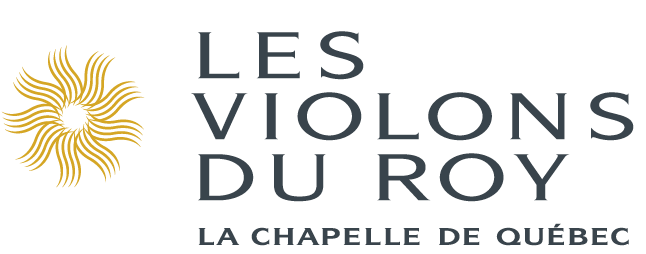 Les Violons du Roy: Created in 1984 by founding conductor Bernard Labadie, the ensemble includes a core membership of fifteen players and specializes in the vast repertoire of chamber orchestral music, performed in the most stylistically appropriate manner to each era. Although the ensemble plays on modern instruments, its approach to the works of the Baroque and Classical periods has been strongly influenced by current research on performance practice in the 17th and 18th centuries; for this repertoire Les Violons du Roy uses replicas of period bows. The orchestra also regularly delves into the repertoire of the 19th and 20th centuries, demonstrated by its recordings of works by Piazzolla, Bartók, and Britten. At the heart of the music scene in Québec City from the outset, Les Violons du Roy is well known throughout Canada by virtue of numerous concerts and recordings broadcast by Radio-Canada and CBC, and its regular participation at music festivals. The orchestra’s noteworthy performance at the Berlin Philharmonic with Magdalena Kožená during its January 2014 European tour, which also included stops in London, Brussels, and Paris, is one of the most recent highlights in the ensemble’s history. The twenty-nine recordings produced by Les Violons du Roy (on various labels including Dorian, Atma, Virgin Classics, Naïve, Hyperion, Analekta, Erato) have received critical acclaim and many have earned Juno awards (Apollo e Dafne de Handel, 2001; Requiem de Mozart, 2003; Piazzolla, 2007) and the Félix Award (Water Music, 2008). Les Violons du Roy is a proud member of Orchestras Canada, the national association representing Canadian orchestras. Director of field research: Marc-Antoine Boutin
Les Violons du Roy: Created in 1984 by founding conductor Bernard Labadie, the ensemble includes a core membership of fifteen players and specializes in the vast repertoire of chamber orchestral music, performed in the most stylistically appropriate manner to each era. Although the ensemble plays on modern instruments, its approach to the works of the Baroque and Classical periods has been strongly influenced by current research on performance practice in the 17th and 18th centuries; for this repertoire Les Violons du Roy uses replicas of period bows. The orchestra also regularly delves into the repertoire of the 19th and 20th centuries, demonstrated by its recordings of works by Piazzolla, Bartók, and Britten. At the heart of the music scene in Québec City from the outset, Les Violons du Roy is well known throughout Canada by virtue of numerous concerts and recordings broadcast by Radio-Canada and CBC, and its regular participation at music festivals. The orchestra’s noteworthy performance at the Berlin Philharmonic with Magdalena Kožená during its January 2014 European tour, which also included stops in London, Brussels, and Paris, is one of the most recent highlights in the ensemble’s history. The twenty-nine recordings produced by Les Violons du Roy (on various labels including Dorian, Atma, Virgin Classics, Naïve, Hyperion, Analekta, Erato) have received critical acclaim and many have earned Juno awards (Apollo e Dafne de Handel, 2001; Requiem de Mozart, 2003; Piazzolla, 2007) and the Félix Award (Water Music, 2008). Les Violons du Roy is a proud member of Orchestras Canada, the national association representing Canadian orchestras. Director of field research: Marc-Antoine Boutin
 La maison de la culture Ahuntsic : Officially inaugurated in 1999, but active since 1989, la maison de la culture Ahuntsic is recognized for the quality and the diversity of its music programming. With the main cultural facility (a 300-seat amphitheatre) in the municipality of Ahuntsic-Cartierville, concerts in various locations, and programmes of cultural mediation throughout the region, the arts centre reaches almost 45,000 people annually. A member of the network Accès-culture, la maison de la culture Ahuntsic is multidisciplinary, but is particularly noted for the abundance of music in its programming. It is especially recognized for its numerous creative residencies and its presentation of unique world music or non-Western classical music concerts that bring a wide variety of local and foreign musicians to the stage, under the artistic direction of Liette Gauthier. Today, the arts centre is acknowledged as a place of exchange of music from many cultures and a gateway for musicians and composers on their North American tours. The programming involves an increasing number of educational, cultural, and community agents in order to reach out to new audiences and enhance the cultural activities through programmes of cultural mediation and series conceived for specific audiences. These include: Les Concerts au bout du monde, Les Vendredis cannibals, Concerti sous la pergola, BABEL musiques, Ma Planète Mon école, and Des mots sur mesure, a series begun in 2010 and awarded the PRIX Initiative RIDEAU in 2014.
La maison de la culture Ahuntsic : Officially inaugurated in 1999, but active since 1989, la maison de la culture Ahuntsic is recognized for the quality and the diversity of its music programming. With the main cultural facility (a 300-seat amphitheatre) in the municipality of Ahuntsic-Cartierville, concerts in various locations, and programmes of cultural mediation throughout the region, the arts centre reaches almost 45,000 people annually. A member of the network Accès-culture, la maison de la culture Ahuntsic is multidisciplinary, but is particularly noted for the abundance of music in its programming. It is especially recognized for its numerous creative residencies and its presentation of unique world music or non-Western classical music concerts that bring a wide variety of local and foreign musicians to the stage, under the artistic direction of Liette Gauthier. Today, the arts centre is acknowledged as a place of exchange of music from many cultures and a gateway for musicians and composers on their North American tours. The programming involves an increasing number of educational, cultural, and community agents in order to reach out to new audiences and enhance the cultural activities through programmes of cultural mediation and series conceived for specific audiences. These include: Les Concerts au bout du monde, Les Vendredis cannibals, Concerti sous la pergola, BABEL musiques, Ma Planète Mon école, and Des mots sur mesure, a series begun in 2010 and awarded the PRIX Initiative RIDEAU in 2014.
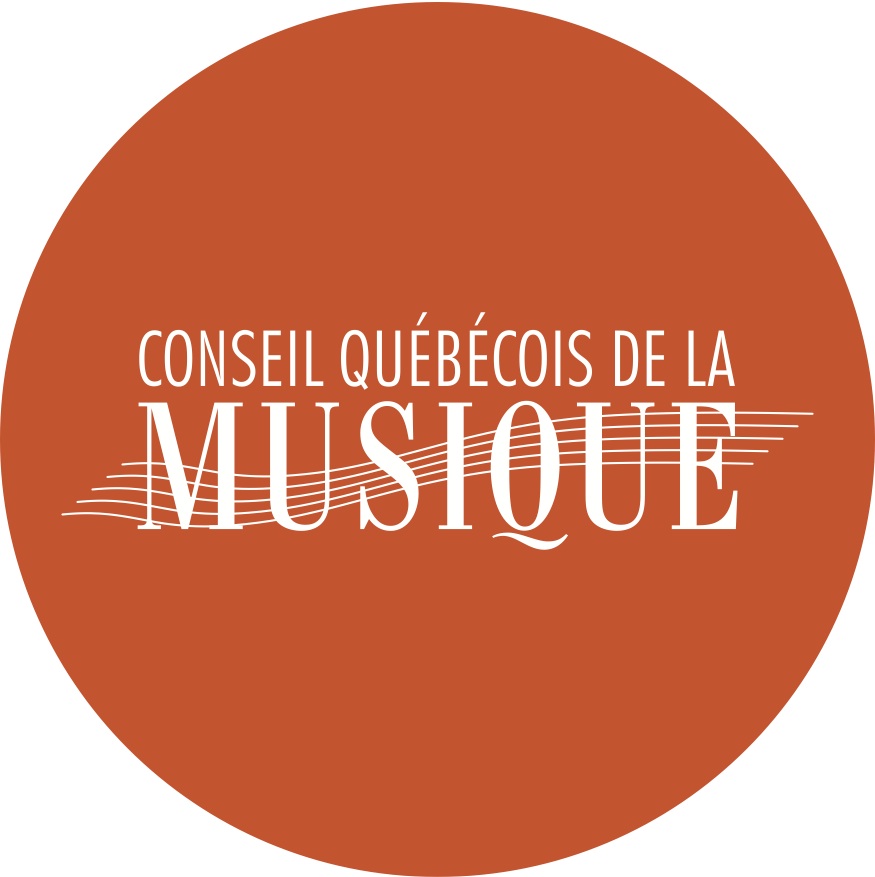 Le Conseil québécois de la musique: As a meeting place for concert music professionals and their ensembles and organizations, the CQM seeks to represent the sector to political and public bodies and the media in order to increase its visibility and improve the work and living conditions of musicians and cultural workers. The council also provides the community with a large range of services and activities related to audience and market development, encouraging artistic excellence, equipping the professional integration of emerging artists, and, finally, promoting the best business practices.
Le Conseil québécois de la musique: As a meeting place for concert music professionals and their ensembles and organizations, the CQM seeks to represent the sector to political and public bodies and the media in order to increase its visibility and improve the work and living conditions of musicians and cultural workers. The council also provides the community with a large range of services and activities related to audience and market development, encouraging artistic excellence, equipping the professional integration of emerging artists, and, finally, promoting the best business practices.






